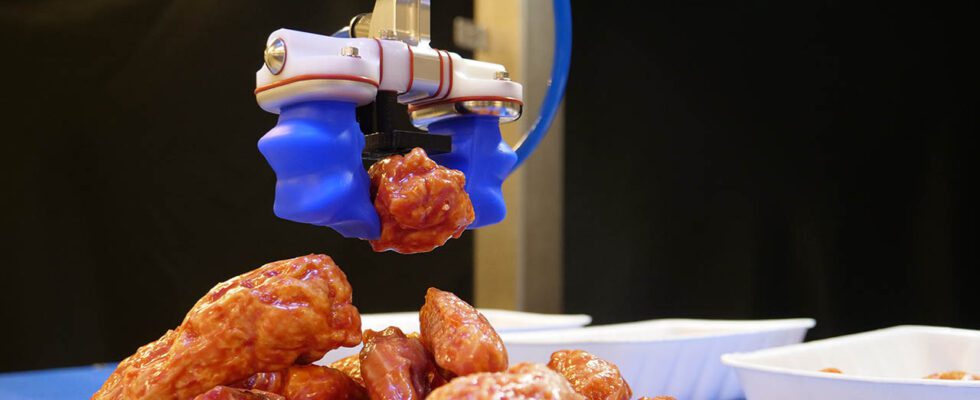It became a habit. The Boston Dynamics company publishes a new video supposed to demonstrate the prowess of its humanoid robot, named Atlas. This time, it is equipped with pliers. And you will see, he can throw and catch things with these claws. Of course, he remains particularly agile if he is pushed to practice parkour. Smooth walking, climbing stairs, back somersault… nothing is spared us.
Tongs as hands
A video intended to demonstrate the company’s progress, crystallized by the 28 hydraulic joints of its Atlas robot, its speed of 2.5 meters per second, and its real-time perception. But the main innovation is based on the “hands” of the robot, or rather its grippers. Grippers that the robot uses to manipulate a wooden board and put it down. But also to throw a bag.
“We don’t just think about how to make the robot move dynamically in its environment, like we did for parkour and dance,” explains in the video Scott Kuindersma, leader of the Atlas team. .
“We are starting to put Atlas to work and think about how the robot should be able to perceive and manipulate objects in its environment. »
Great demo, but nothing sold yet
Because the ability to manipulate objects in its environment is an essential skill for a robot, whether humanoid or not.
“A humanoid robot will be well suited for applications like manufacturing, factory work, and construction, where a humanoid form factor is a good fit with its two-handed nature, ability to stand, move heavy objects, and work in spaces traditionally designed for humans,” says Scott Kuindersma.
Still, if the video is impressive, the Atlas robot is currently neither marketed nor available for sale. Ben Stephens, the control manager at Atlas, believes that we are still a long way from having robots capable of performing common tasks in the real world.
And here is a concrete example.
The galley of robots in slaughterhouses
Nvidia, the chip manufacturer, has just presented the work of a start-up specializing in the field of agribusiness. Soft Robotics, that’s the name of the company, uses Nvidia’s simulation platform to train robots to pick up food, in this case pieces of chicken in a slaughterhouse.
A job until now reserved for slaughterhouse employees. Why ? Because the hand is a great precision tool. And it turns out that the robots still have to work hard to grab the pieces of meat. Yes, with pliers. The same claws as those of Atlas, the Boston Dynamics robot.
Nvidia details in this use case how Soft Robotics uses its GPUs to train and deploy robots designed to manipulate chicken wings and drumsticks.
This example is all the more interesting because food processing and packaging plants might seem like an obvious place to deploy robots. Chicken wings, for example, are quickly moved on conveyor belts to be evenly cooked and prepared. At the same time, employers, such as meatpacking companies, sometimes find it difficult to fill this type of job.
The Chicken Drumstick Challenge
But despite this, the food industry is relatively slow to adopt robotics. Why ? Because picking up different irregular-shaped objects has long been a major challenge for robots. Also, a piece of chicken is slippery and shiny, which makes it even harder to parse and grab. In short, Boston Dynamics can boast with a wooden board, but not with a chicken wing.
Especially since in addition to grippers, a robotic system on the food processing line requires computer vision and AI training to learn how to spot to grab a single piece of chicken. Soft Robotics’ mGripAI system is trained with data sets to pick up and handle different types of food – meats, fruits and vegetables, and even baked goods. The company recently raised $26 million.
According to Nvidia, Soft Robotics has successfully accelerated its mGripAI deployments from months to days. The start-up uses Isaac Sim, a platform for creating digital twins of manipulative robots. Isaac Sim, which Nvidia launched in 2021, lets you create 3D renderings of chicken parts in different environments — like conveyor belts or bins — and with different lighting scenarios. These simulations help the AI system understand how different pieces of chicken can be stacked on top of each other and which will be easier to grab.
